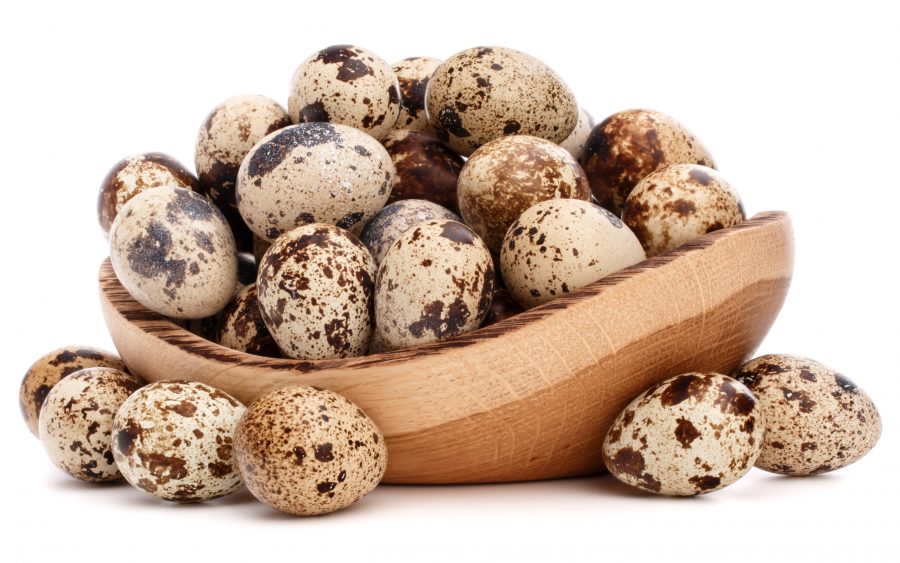The diminutive quail can produce large amounts of decorative and edible eggs
Quail were once wild in Britain and are a member of the pheasant family. Because they are very small, they can be kept in small areas but they must be fully confined as they are excellent fliers and not likely to stay around if let loose. They are ground-dwellers and were traditionally kept in aviaries to clear up dropped seed. There are several different types but it is usually the Japanese and Italian Coturnix quail that are kept for meat and egg-laying. There is also a larger type, known as the Bobwhite, which is not such a good egg-layer but sometimes kept for meat. The Chinese Painted quail is much smaller than other members of the quail family, such as Japanese and Harlequin quail, at around 4-5 inches in height.
Most people keep quail for their attractive eggs, which are still regarded as a delicacy and some take it a step further and keep them for meat. Japanese quail should lay up to 200 eggs and come into lay at around 50 days old. Another reason for keeping quail is because they are delightful, busy birds and enchanting to watch.
Ideally the birds like to live in an aviary type situation, with a good sized wire fort to keep them interested in the outdoors. Shavings on the ground provide dust baths, while boxes lined with hay, inside the aviary, provide places to shelter, hide and breed.
Some people keep them in large rabbit hutches and some in poultry arks. A rabbit hutch type arrangement, or small cage is rather boring for the birds but might be necessary for winter accommodation. The advantage of an ark is that it can be moved around so that the birds have a new area to search for snippets of food, keeping them busy and interested. If very wet, then move them on to hard, dry ground, or even bring the ark into a building. They will need protection from cold winter weather. Because they are naturally ground-dwellers you cannot expect them to walk up a ramp to a higher house from their run – they want ground floor accommodation. It is important to ensure that the area is rat-free, as a large rat can easily take a quail and probably would find it quite easy to penetrate most cages. Get rid of rodents the moment you see any signs of them.
What to watch out for!
Do not have too many males to females, as they can over-mate and seriously injure the backs of the females with their claws. Separate the males and rear for meat. Of course you need to ensure you can humanely kill them and it’s best to contact the Humane Slaughter Association to check your method is correct. Gentle handling of these shy birds is particularly important.
They are also not good at finding shelter in bad weather, so you may need to bring their runs inside a well lit and ventilated building in inclement weather.
They are small birds so they don’t require huge amounts of food, about 150g per bird, per week. It is now possible to buy specialist quail food, fed from a small poultry feeder. They also love meal worms and millet and if you spread them on the floor it keeps them busy scratching for them. If not on grass, try growing pots of grass to put in the enclosure or tear up tufts of grass from the garden for them to peck at. As with all poultry, provide grit. You might have to crush it into smaller pieces. Clean water is important: quail don’t like to drink stale water. They do not have a reputation as ‘tidy’ layers, laying eggs more or less where they are but some strains will use shallow plates lined with straw for nests, so it’s worth a try!
Domestic quail are not good breeders and usually their eggs are put into incubators. Quail can fly soon after hatching so any brooder must have a mesh roof and they are amazingly small when they hatch. Perhaps an easier method is to rear them under a small broody bantam. A quail will live for up to two years if well cared for.
They are entertaining to watch and although they make a pleasant chatty noise, they are not loud. Be sure to site their housing where you can watch them!
This article was taken from The Country Smallholder. For more articles like this, subscribe here.








